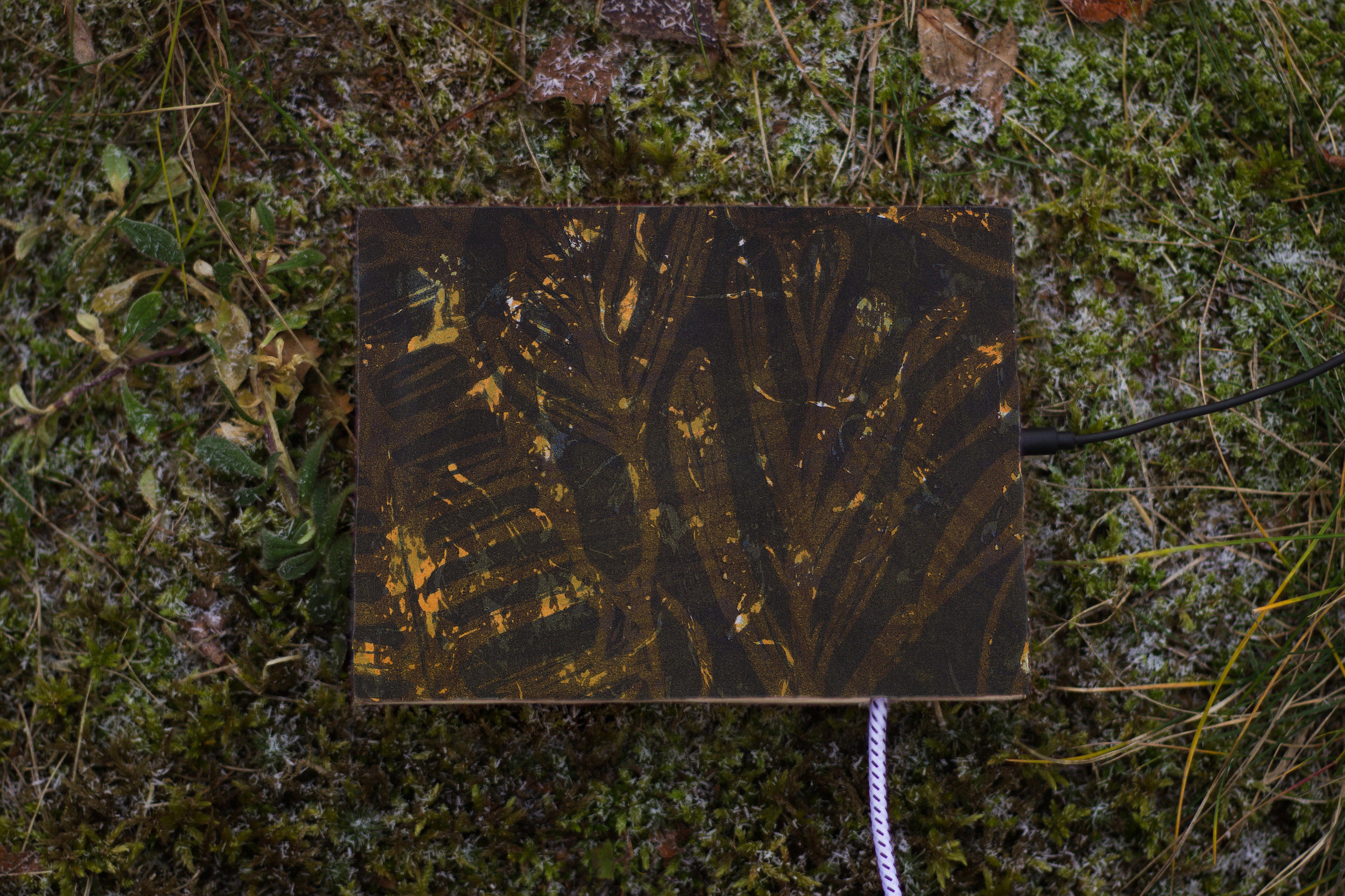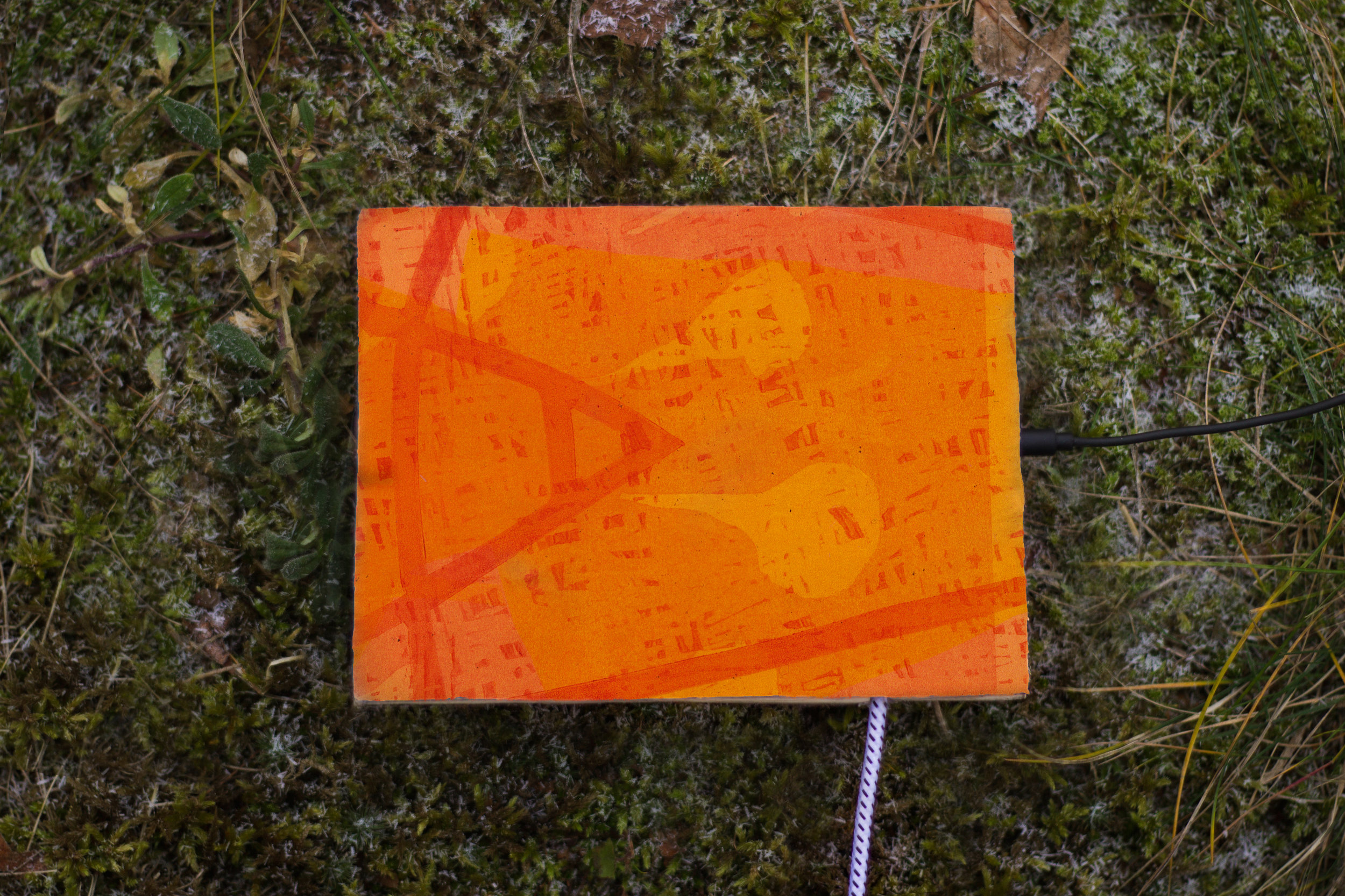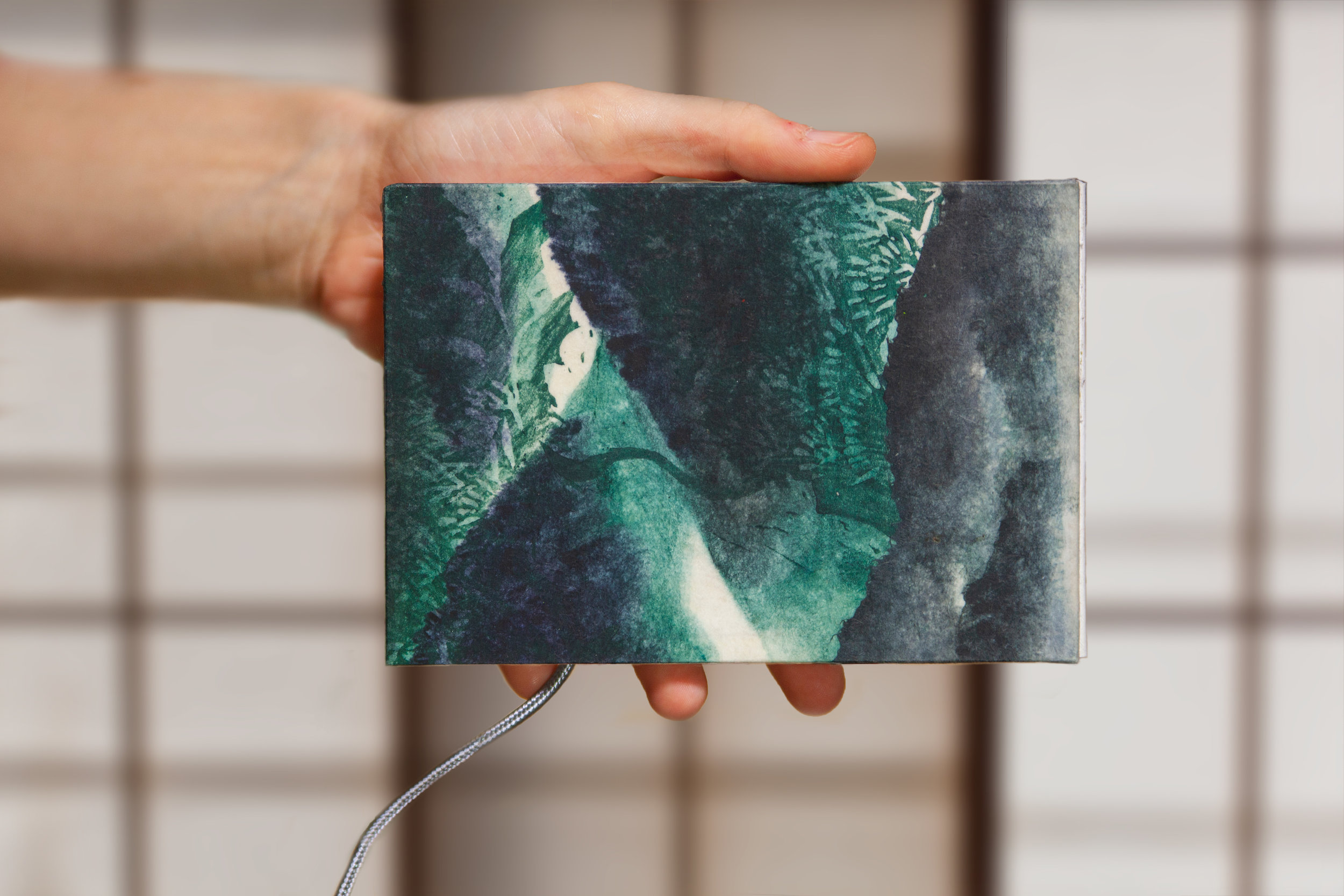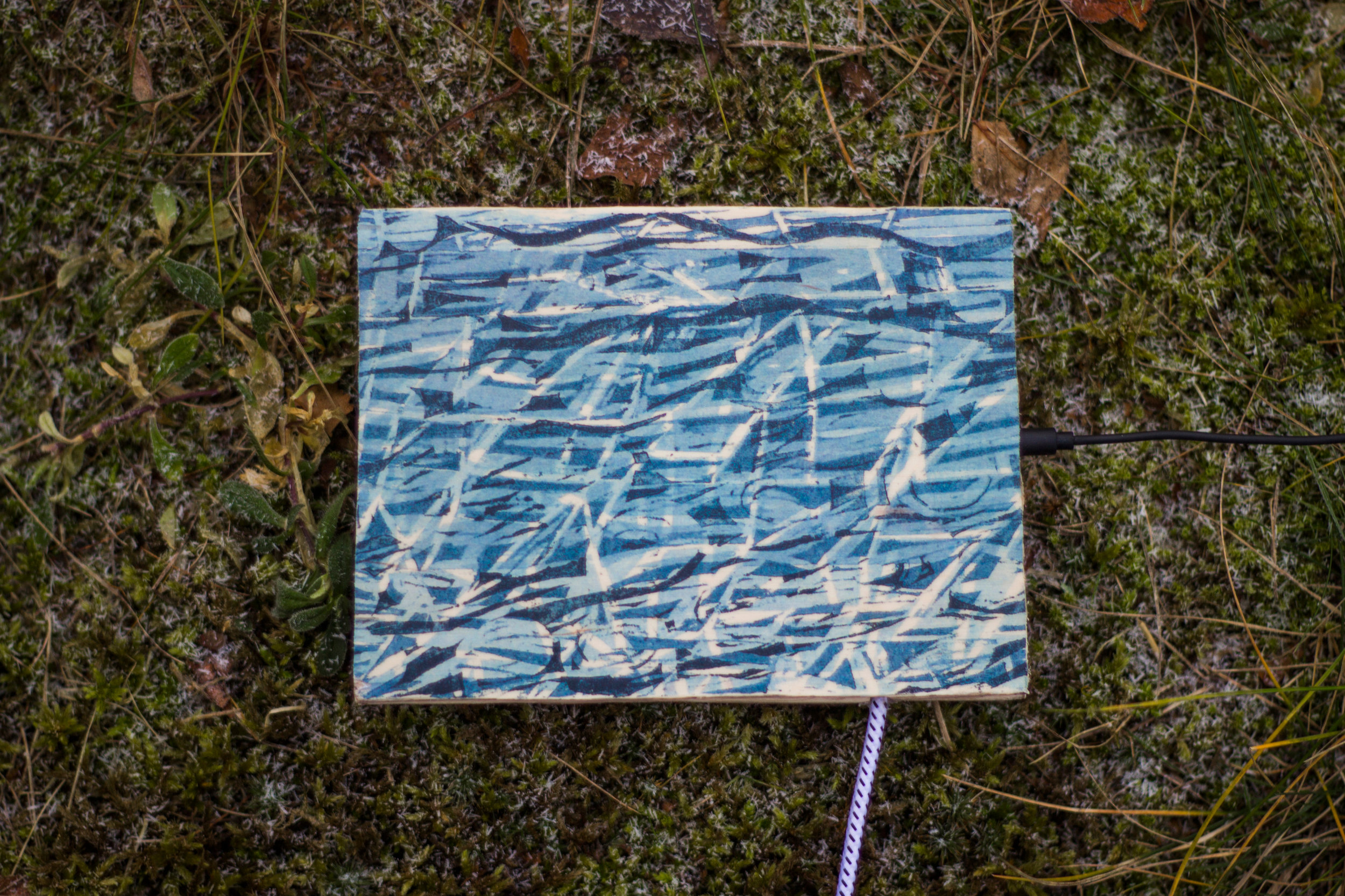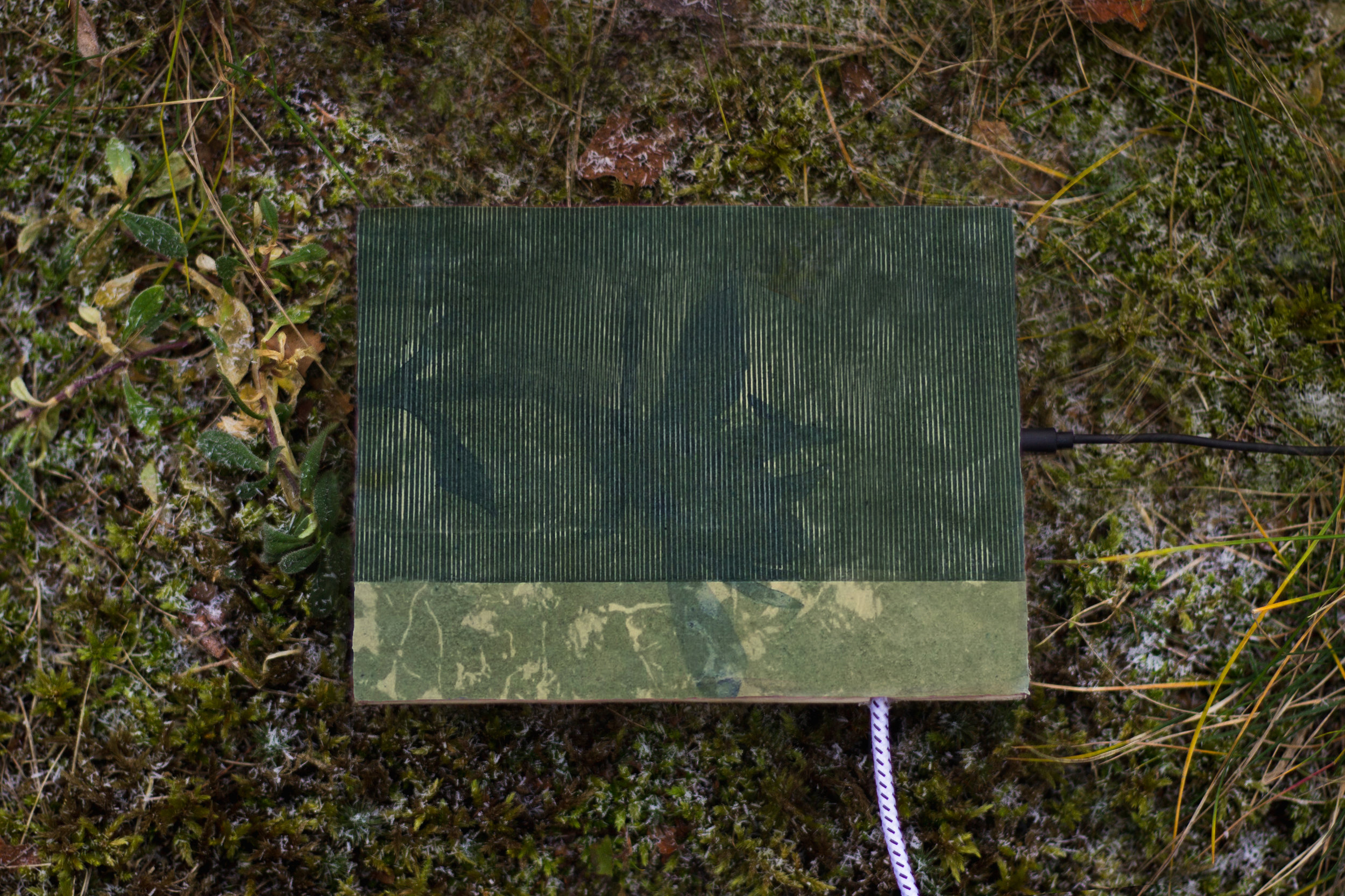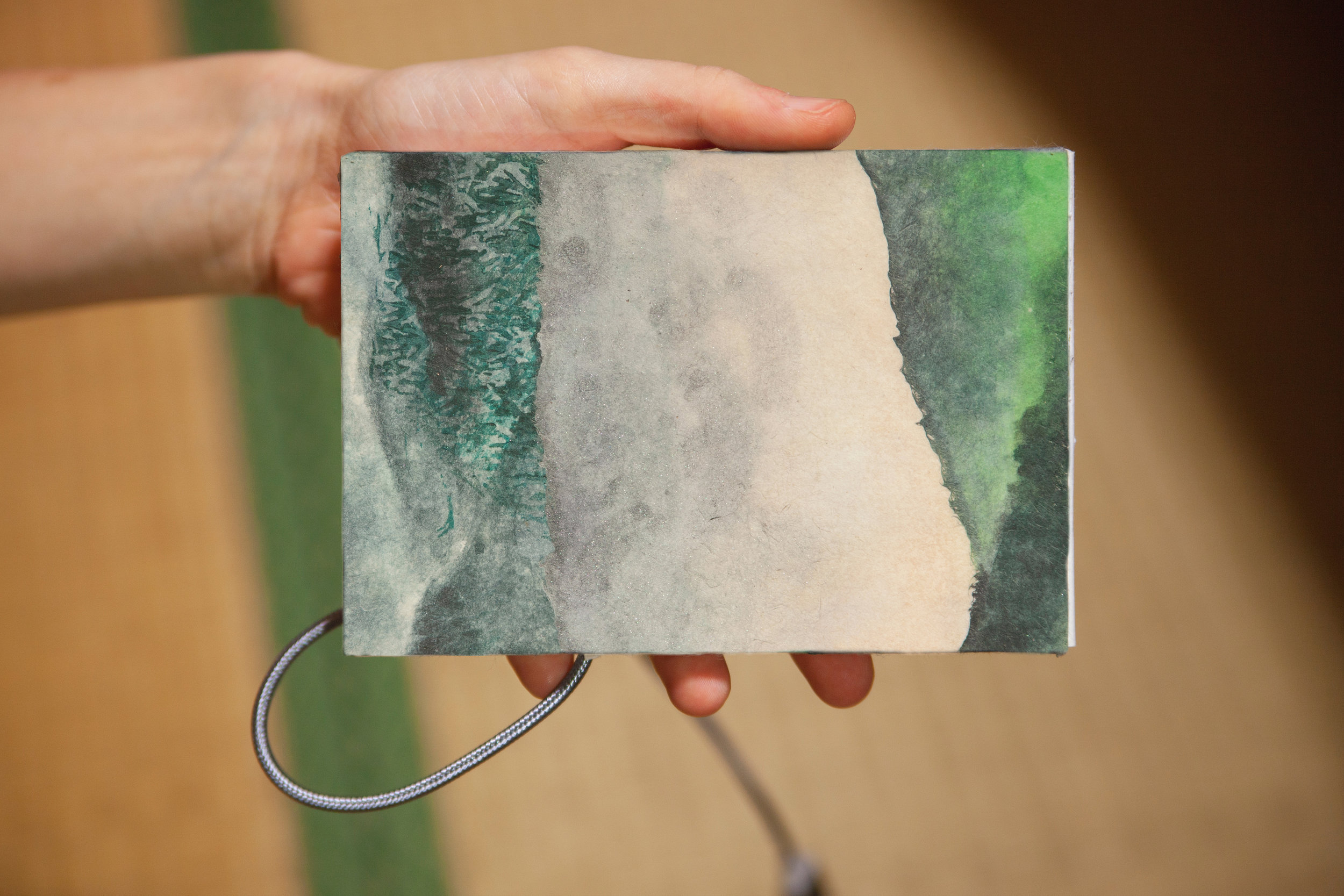Sound Envelopes
Sound Envelopes are electronic musical postcards, created by Passepartout Duo.
Like any postcard, Sound Envelopes capture a moment with the intention of it being shared with others. Each Sound Envelope contains a musical track that can be heard through headphones when the postcard is plugged in via USB, alongside a print created by a local artist from the location in which the postcard was created. Intending to draw connections between people and places, the Sound Envelopes are each gifted to a recipient with directions to pass it along to someone further. The result is a chain of locations connected through music, people, and travel.
Sound Envelopes installation at the Nakanojo Biennale 2019
1. Rauma, Finland
The first location in which Sound Envelopes were created was Rauma Finland. There, the duo created a set of 5 from local birch wood with prints by the Finnish artist Mari Aspola. After organizing small performances in homes around town, the postcards were given as gifts to 5 different recipients on Christmas Day 2018. The postcards then slowly traveled hand in hand from Finland to Nakanojo, Japan, the site of a future exhibition date at the Nakanojo Biennale 2019. Two of these five original postcards made the entire journey, and were put on display for audiences in Japan.
2. Nakanojo, Japan
Upon arriving in Nakanojo, two additional Sound Envelopes were created to match those that arrived from Finland. Instead of Finnish baltic birch, these were made from the much more delicate Japanese washi paper. These new Sound Envelopes feature prints by Hiromi Hoshino, another local artist. The four postcards were installed in the shown setting, the Kamidana room of a very old house called Yamase, previously owned by a silk maker.
The Music
The first five tracks were written and recorded by Passepartout Duo in Rauma, Finland during our eight-week-long residency with RaumArs Artist in Residence Program. Inspired by the aesthetics in Old Rauma, the UNESCO Heritage town center featuring wooden houses and hidden courtyards, our music endeavors to encompass the mystical background present in everyday Finnish life. The music is written for a set of portable electronic instruments that allow the duo to play anywhere. Alongside amplified vibraphone bars, a main feature of this instrumentation is the bitKlavier, a digitally prepared piano instrument that augments and manipulates the keyboard’s sound in realtime.
The sixth and seventh postcards were written as followup pieces to those original five during a residency for the Nakanojo Biennale in Japan. Largely working at a defunct elementary school’s music room, the instrumentation choice was based on the instruments available: marching percussion instruments like xylophone and bass drum, and electronics. The result are two contrasting pieces that play on inherent similarities found between rural life in Nakanojo and Rauma.








